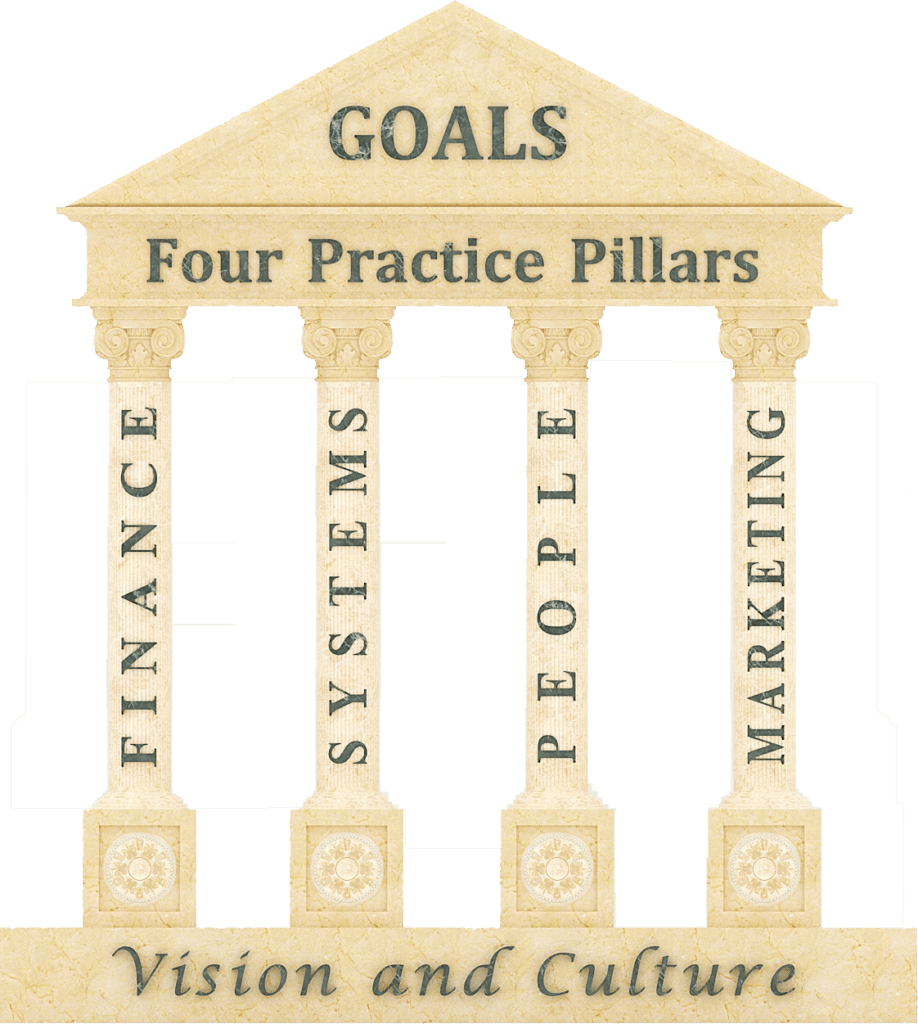The Evaluation "Cookbook"

What’s the first step in constructing a house, a high rise, an office complex, or any other building? Make sure you have a strong foundation!
Many practice management gurus like Peter Drucker, Clayton Christensen, John Kotter, Tom Peters, and many others, advocate that a strong office culture is VITAL if you want to have a successful business!
I often say that you can have the best systems, protocols, checklists, procedures, and equipment in your office, and it won’t make a difference if you don’t have a strong culture. Culture starts with you, the leader, and your vision for your practice.
Once that is established and protected, we can focus on the four pillars that support your practice and your goals.
We also coach and train the team to take “ownership” in their practice. We work to get everyone rowing in the same direction. If you want your practice to be successful, you must have a team that supports, and believes in, your vision.
Once your vision and culture are firmly established, it’s time to focus on the four practice pillars. All of these are equally important. If you spend too much time focusing on just one or two of them, the others suffer. And inevitably, that will start to affect all areas of your practice.
Let me ask you: If you don’t spend time on your marketing plan, what are the chances that you’ll have a healthy new patient flow?
If you don’t have a healthy new patient flow, how does that affect your schedule?
If you don’t consistently have an ideal schedule, how does that affect your finances?
If you aren’t bringing in enough money, how can you afford to hire the best talent?
Can you see how all four pillars are interdependent?
If one of them starts to crack or decay, it will ultimately cause the building to fail.
See below for more details of the items we evaluate in each of the practice pillar areas:





And to explain the “why” behind the vision.
Vision statements are different from mission statements. Your vision statement is internal. Only you and your team see this. It defines how you envision your practice as the most successful BUSINESS.
This is different from your mission statement, which is external. Your patients and the world see your mission statement. It explains how you treat your patients and what makes your office unique. It describes WHAT you are doing NOW.
Your vision statement is forward-thinking. Where do you want to be in the next 5 years, or 10 years?
Vision statements are most effective when you:
Here are guiding questions to help you start to create your practice’s vision:
Most vision statements are one to two sentences long. When Facebook first started, their vision statement was “move fast and break things.”
If you have a vision for your practice, GREAT! Can you recite it off the top of your head? Can your team? I encourage all my teams to recite their vision at the end of each morning huddle. It’s a way to get everyone in the “right frame of mind” when they start their day.
It is your constant reminder as to why you are doing what you’re doing.
It is your North Star.
It is your guide when you have difficult choices to make.
It helps keep you on the right path to achieve your goals, whatever they may be.
Your vision defines, infuses, and protects your culture.
I’ve already said that your culture is more important than your systems, checklists, protocols, and procedures. Yes, you have to have all of those things if you want to have a successful practice. But nothing will get done, on a regular basis, in a consistent manner, if you don’t have a strong culture.
© 2024 Get Ahead Coaching & Consulting